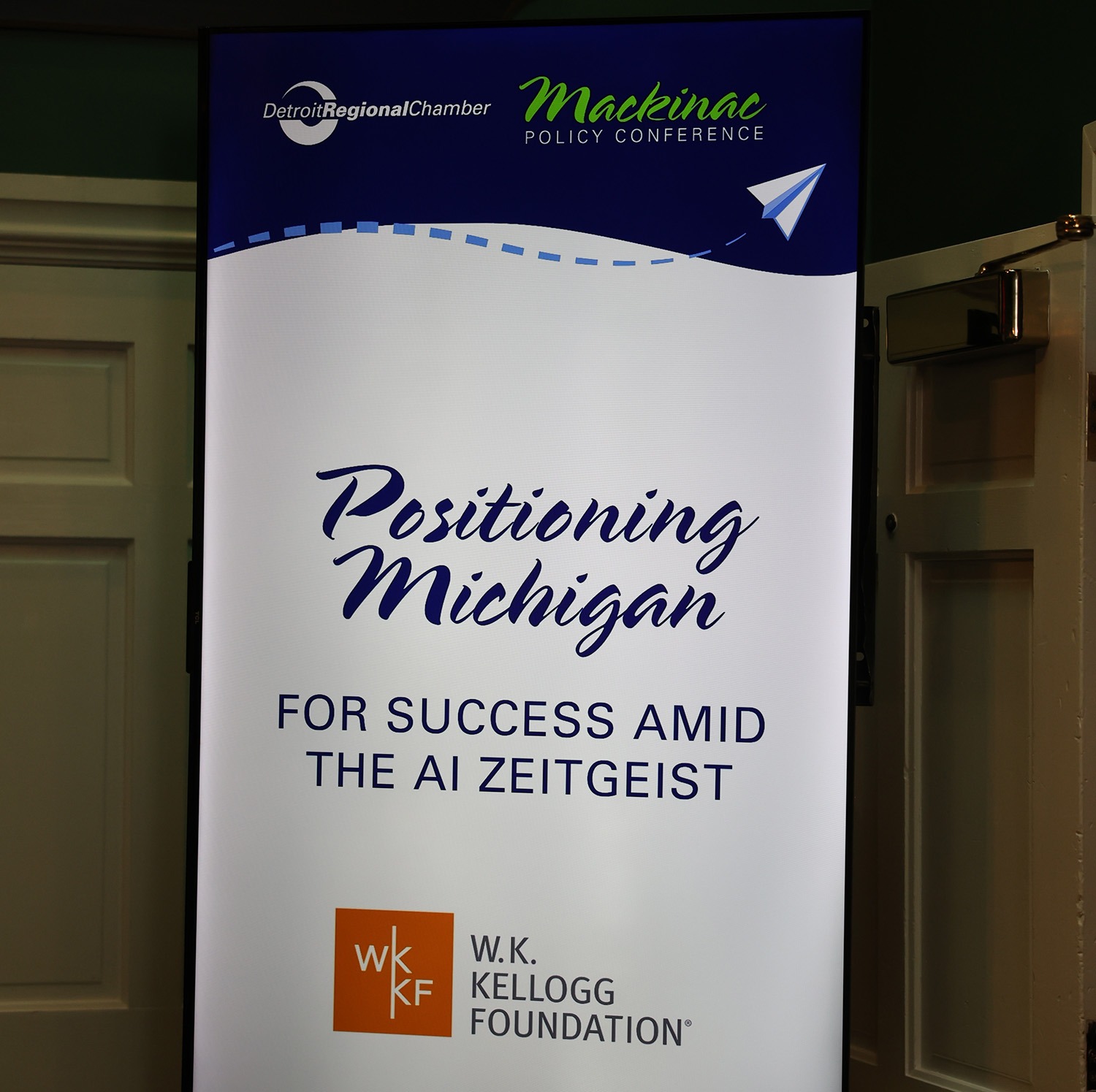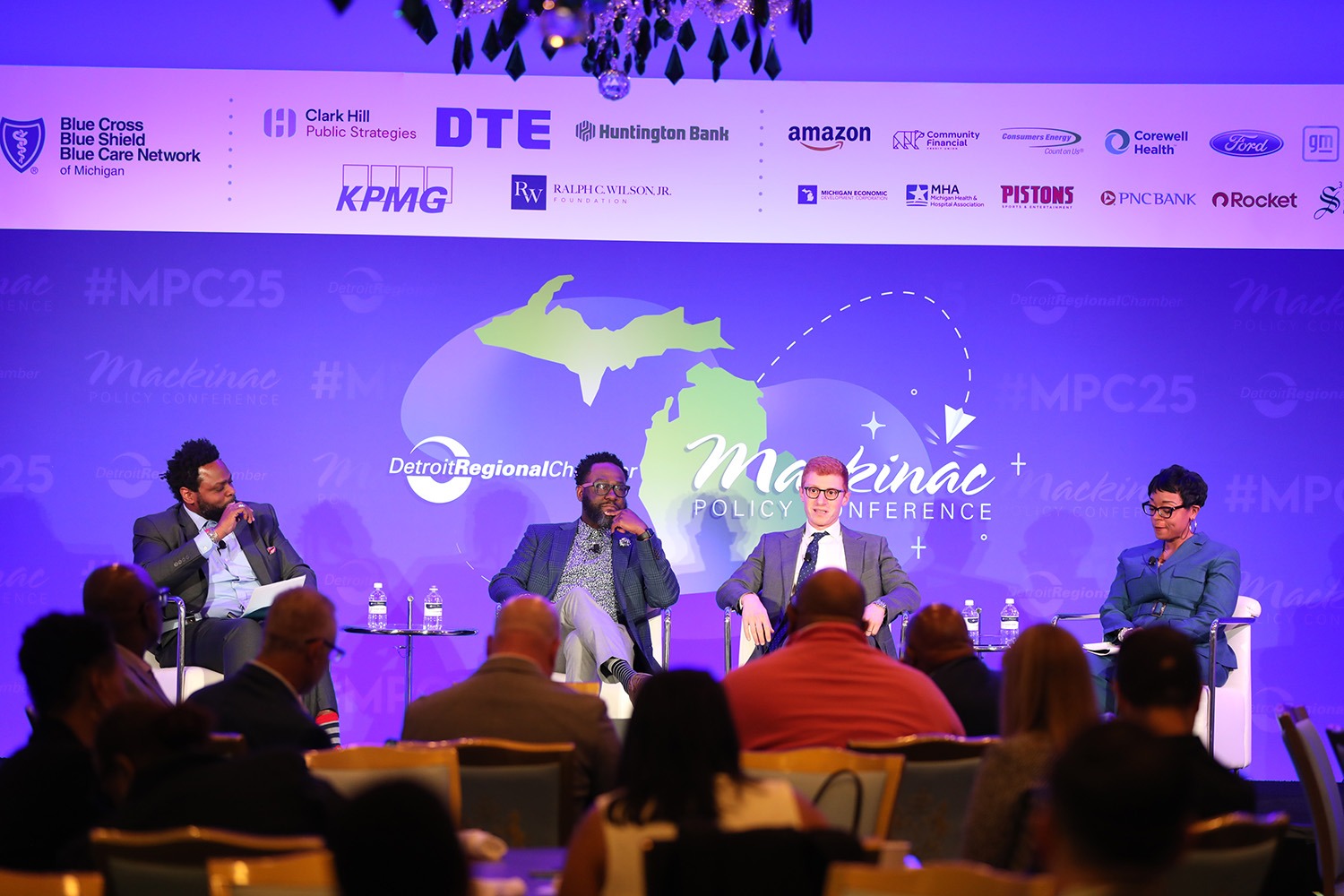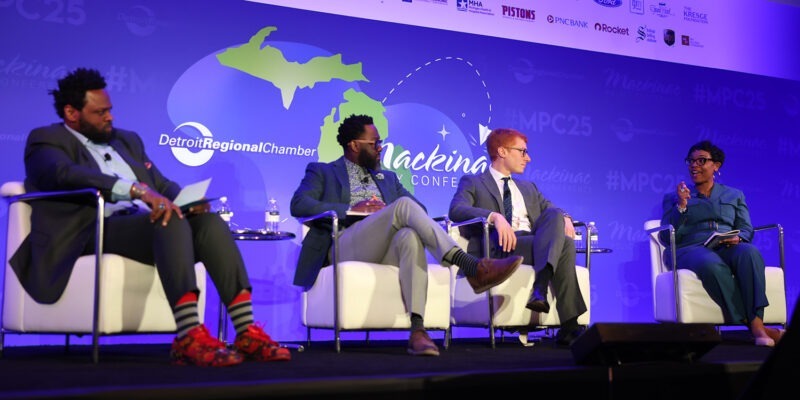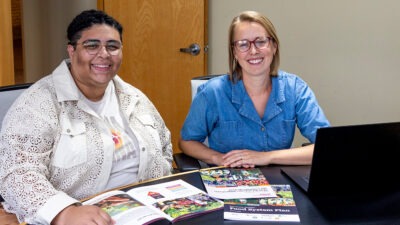For many of us, the idea of AI was once confined to the realm of science fiction—something we watched on our screens rather than experienced in real life. But today, artificial intelligence isn’t just a futuristic storyline—it’s woven into the fabric of our everyday lives, shaping how we shop online, get answers to our questions and even how we connect with the world around us.
W.K. Kellogg Foundation (WKKF) asked leaders at the Mackinac Policy Conference in Michigan to discuss ways to harness the power of AI to support Michigan’s workforce.
Held annually, the Mackinac Policy Conference brings together politicians, industry leaders, changemakers and journalists to help shape Michigan’s future.
“We want to focus on tangible, near-term investment opportunities that lay the groundwork for long-term success. That includes building capacity within our systems, strengthening infrastructure to support innovation and, most importantly, investing in people—our students, our workers and our communities across the Mitten,” said Yazeed Moore, director of Michigan programs at WKKF.
Positioning Michigan for AI-Driven Success
Over the last three years, artificial intelligence has evolved from specialized, narrow tools into broad, multipurpose technologies. Its rapid development has led many tech sector leaders to predict that it will replace white-collar workers across various industries — and this shift is already underway. Since 2024, companies like Cisco, Intuit, Duolingo and UPS have announced significant workforce reductions as they move to integrate AI more extensively.
“The type of folks that are getting replaced are some of the most common occupations in Michigan, like office and administrative functions, and that’s 12% of jobs in the state and that is probably the low-hanging fruit for AI,” The AI Education Project CEO Alex Katron said.
The AI Education Project is a nonprofit working to scale equitable AI literacy and workforce readiness to untapped communities across the United States.
There’s no doubt that in 12 years, entering the workforce will look vastly different than it does today, Katron added.
“We have a responsibility to do some big picture thinking about what we want the world to look like,” he said.
Katron believes an economic recession is coming, driven in part by businesses turning to AI to reduce costs.
“I think most observers would say that we’re actually potentially quite close and so that will really be the moment where things accelerate and so we have very little time to take some steps and the states that move quickly will win the future,” he explained.
Michigan has begun preparing for the potential workforce changes brought by AI technologies. According to the Michigan Department of Labor and Economic Opportunity’s AI and the Workforce Plan — the state’s first blueprint of its kind — nearly 2.8 million Michiganders’ jobs could be reshaped by AI. With the right investments, however, AI could also create up to 130,000 new jobs and generate an estimated $70 billion in economic impact.

Ensuring Equitable Access to AI Opportunities
One way a West Michigan nonprofit is working to boost job access for underemployed community members is by incorporating AI into its career pathways and training programs.
“We are asking how we might connect people to opportunities to build the systems, to design the systems that we are actively practicing because that is where thriving wage and family economic security is, long-term,” said Jamon Alexander, CEO of the West Michigan Center for Arts + Technology (WMCAT).
Over the past three years, WMCAT has hosted three tuition-free cohorts focused on cybersecurity. The eight-month program equips students with the skills needed for job opportunities in this rapidly growing field.
“We are starting to incorporate AI into the program in order to improve the clunky workforce,” he added. “Our model at WMCAT is combining technical expertise, connecting people to actively using AI and designing systems, but also not losing sight of the human element to ensure they’re not easily replaceable. Even though today’s artificial intelligence is incredibly powerful and capable of taking on many complex jobs and tasks, how we understand and accept the technology could be a significant barrier to unlocking its full potential.
“I think sometimes the conversation about equitable access to AI can be a distraction for us,” explained Tiffany Taylor, co-president and partner at ASU+GSV Summit.

The ASU+GSV Summit is an annual conference organized by Arizona State University (ASU) and Global Silicon Valley (GSV), focusing on the future of learning and work—especially how technology can create more accessible and effective education and workforce solutions.
“We have to stay focused on the equity work that we have been doing prior to emerging technologies becoming a part of every major headline,” Taylor added. “If we are going to just layer on this technology to inequitable systems and we are going to automate those inequitable systems, then the racial wealth gaps that we’ve been fighting against, the opportunity gaps that we’ve been working to disrupt, are just going to continue to widen.”
Taylor says that making individuals effective users of AI is one of the keys to fostering critical thinking and addressing inequities, starting in the K-12 classroom.
This is in line with Michigan’s plan for AI implementation. The plan calls for expanding K-12 AI programming to ensure graduating students come into the workforce with foundational AI skills. For Taylor, teaching students how to navigate AI shouldn’t be the sole focus.
“I worry that some of these tools are saving educators and students time but are removing the productive struggle that actually makes them effective practitioners of their craft,” she explains. That’s why it’s important to help students not just master the academic process but also develop emotional intelligence, adaptability, curiosity and systems thinking.
Taylor points to the need for cross-sector collaboration to ensure funding for innovation projects reaches everyone, regardless of who they are or where they come from.
Cross-Sector Collaboration and Community Engagement
By leveraging AI tools in ways that complement these skills, we can prepare young people of all backgrounds to be lifelong learners and leaders, ready to thrive in a world shaped by emerging technologies.
But access to these tools might become a challenge. As more AI tools are developed, they will undoubtedly come with financial costs. Depending on where a young person lives, a school district may or may not be able to incorporate this technology into the classroom.
“So if we are adjusting school curriculum and policies to support our youngest learners, we need to make sure funding is there to allow them all to access it,” Taylor adds.
For Taylor, the creation of a Michigan AI Equity Innovation Fund is a simple yet powerful solution. She emphasizes that true progress requires multiracial, intergenerational and cross-sector collaboration—whether it’s creating new labs, investing in teachers or transforming teaching and learning.
“So that’s what I’m hoping for Michigan,” Taylor said.







Comments